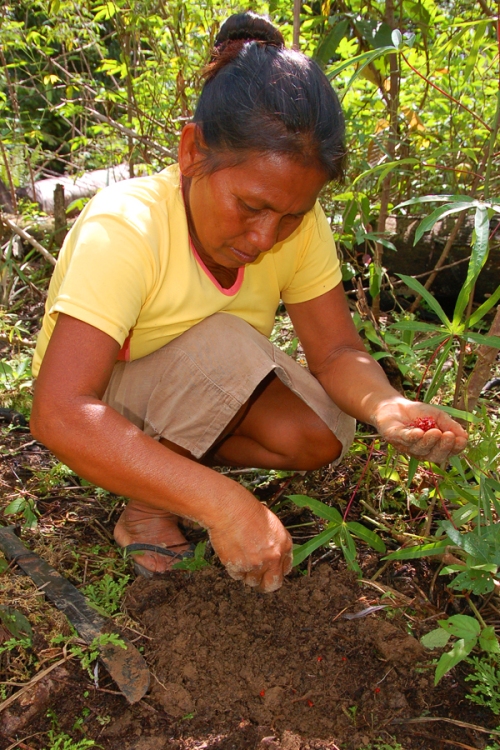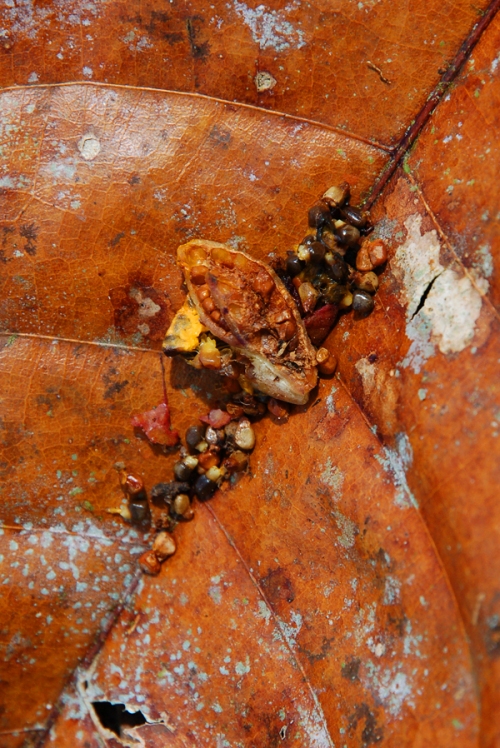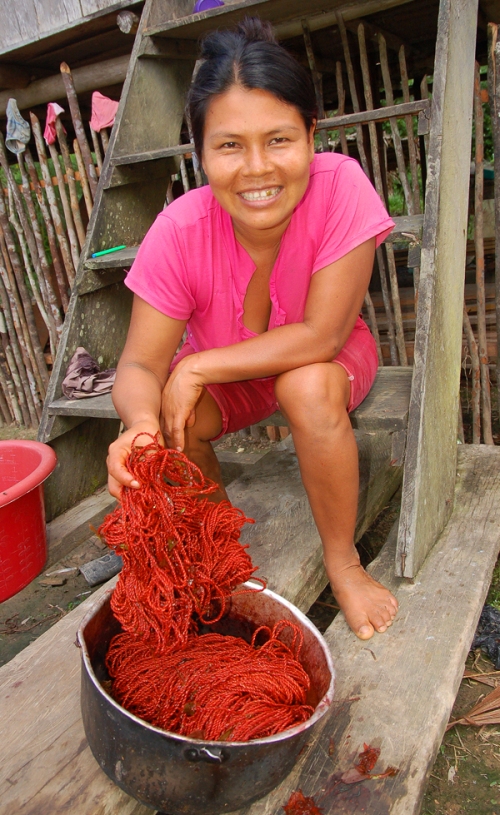by Campbell Plowden

Sisa vine (Arrabideae spp.(?)) with leaves. Photo by Campbell Plowden/Center for Amazon Community Ecology
All artisans from native communities in the Peruvian Amazon use a wide variety of roots, fruit, leaves and bark to dye the fiber of chambira palm trees to weave and sell beautiful handicrafts. These materials come from herb, shrubs, and vines planted in backyard gardens and from trees that grow naturally on river banks, fallow fields and/or old forests. Artisans can usually access enough dye plants from season to season to create the full range of colors, but two successive years of strong rainy seasons flooded most of Brillo Nuevo and other villages close to the river level throughout the northern Peruvian Amazon. These inundations killed many dye plants or damaged them so much that they may take up to five years to recover.

Manuel Mibeco curaca. Photo by Campbell Plowden/Center for Amazon Community Ecology
On June 20, CACE helped the artisans of Brillo Nuevo to create a dye plant garden in higher ground so future floods would not prevent artisans from collecting an adequate supply of dye plants to keep weaving their handicrafts. The Brillo Nuevo curaca (traditional leader) Manuel Mibeco kindly allowed the village’s artisans to convert a small plot growing yuca (also known as manioc and cassava) to this garden that would be available to all of them in hard times.
The process began by harvesting (and peeling) the roots of maturing yuca plants. The artisans then laid out lines to plant seeds, seedlings and rhizomes of key dye plants vulnerable to flooding including guisador (Curcuma longa), sisa/cudi (Arrabidaea spp. ?), jangua, and achiote (Bixa orellana).

Kori Vasquez carrying yuca roots. Photo by Campbell Plowden/Center for Amazon Community Ecology
Below are some other photos of preparing the dye plant garden and dying chambira fiber.
See the CACE video Mishquipanga – a Peruvian Dye Plant to see how one dye plant is harvested and processed.
See the CACE video Artisans of the Ampiyacu for a visual and musical overview of craft-making by Bora and other native artisans of the region.

Lidaberna Panduro harvesting yuca. Photo by Campbell Plowden/Center for Amazon Community Ecology

Lucila Flores digging hole with machete. Photo by Campbell Plowden/Center for Amazon Community Ecology

Beetle grub in soil. Photo by Campbell Plowden/Center for Amazon Community Ecology

Graciela planting achiote (Bixa orellana) seeds. Photo by Campbell Plowden/Center for Amazon Community Ecology

Achiote (Bixa orellana) seeds. Photo by Campbell Plowden/Center for Amazon Community Ecology

Claudel planting guisador (Curcuma longa). Photo by Campbell Plowden/Center for Amazon Community Ecology

Dye plant fruit and seeds. Photo by Campbell Plowden/Center for Amazon Community Ecology

Hilda Campos planting sisa (Arrabideae spp. (?)) dye plant. Photo by Campbell Plowden/Center for Amazon Community Ecology

Amrit Moore and Bora children at dye plant garden. Photo by Campbell Plowden/Center for Amazon Community Ecology

Hermelinda Lopez planting guisador (Curcuma longa). Photo by Campbell Plowden/Center for Amazon Community Ecology

Casilda Vasquez and chambira dyed with sisa (Arrabidaea spp). leaves. Photo by Campbell Plowden/Center for Amazon Community Ecology


















